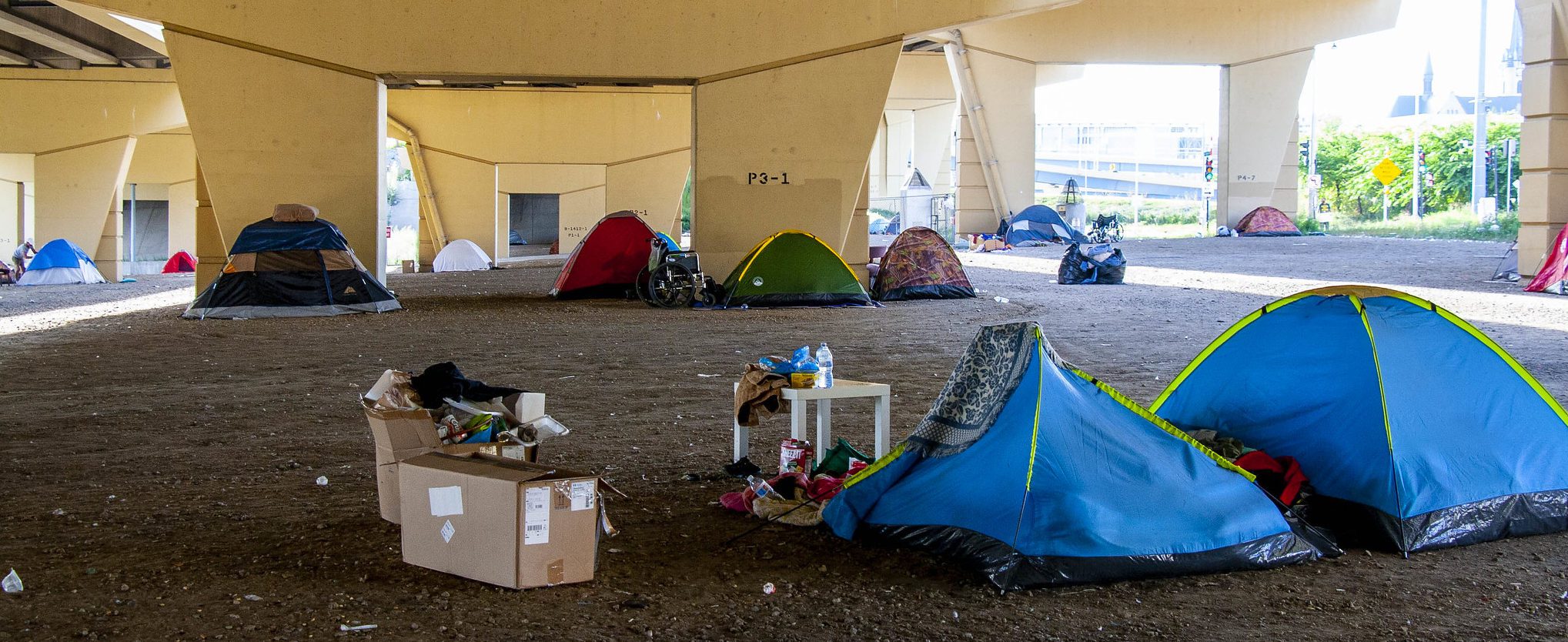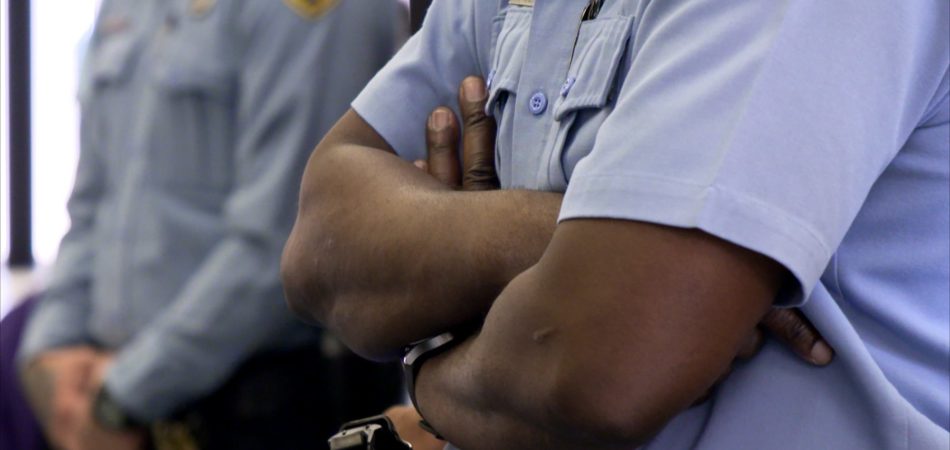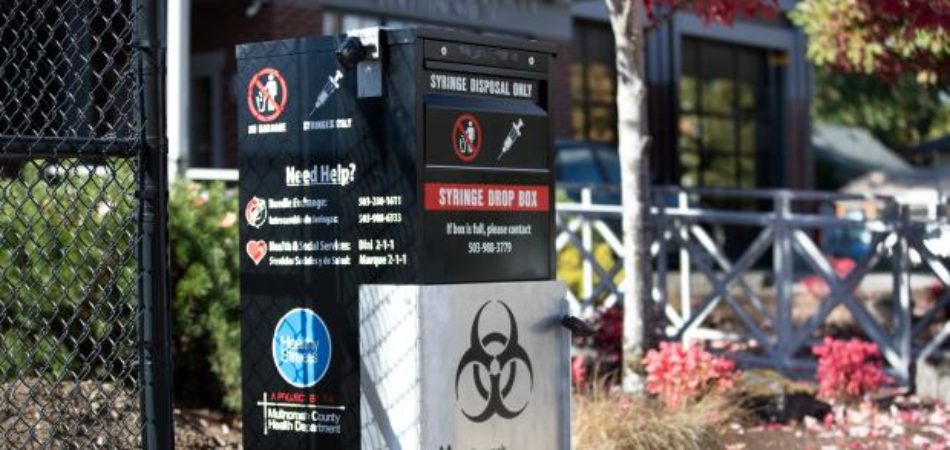
When Responding Well Means Responding Together
Local law enforcement agencies are increasingly encountering unsheltered homelessness and mental health crises. States can help.
My Uber stopped at a red light and I couldn’t miss it: dozens of tents clustered under a bridge, a makeshift camping ground in the heart of the nation’s fourth-largest urban center.
I was on the way to my hotel in Houston, where I was scheduled to speak the next morning about law enforcement responses to homelessness before an audience of police chiefs at the Major Cities Chiefs Association’s winter meeting.
As I waited to go up to the podium the next day, I spoke with Houston law enforcement officers about the encampment I had seen. They told me about the troubling sights they’d seen from a much closer vantage point—conditions that were not simply unlivable, but dangerous to the health of the people camped there. The officers noted that many of the people living in the encampment already had multiple overlapping health needs that homelessness was exacerbating, including serious mental illnesses and substance use disorders.
Many of the big city police departments that attended my talk were already undertaking some sort of “co-response” model, where law enforcement agencies team up with other systems to address calls for service involving people experiencing homelessness or behavioral health crises or both. Sometimes mental health professionals respond to calls along with law enforcement officers; other responses pair officers with social workers to provide case management services to people who frequently interact with law enforcement. In some of the best models, people who have experienced homelessness or mental illness themselves are engaged as peer navigators.
The chiefs were already convinced that such initiatives are important and effective. But they did have some hard questions.
They asked how many times their officers should offer treatment instead of enforcement to someone who says they don’t want or need the help. They wondered how effective treatment is when it’s accepted. They confronted the reality that chronic, relapsing illnesses take significant time to treat effectively—a challenge for a profession in which officers typically spend only minutes with the people they encounter.
I told them what we’ve learned: There are many effective, evidence-based treatments for mental illnesses and substance use disorders, and peer navigators can help connect people experiencing homelessness to treatment when other strategies have failed. But everyone in the room was clear that the treatment capacity in each of their jurisdictions is entirely unequal to the urgency and severity of the need.
At its core, law enforcement is a helping profession. The chiefs I met in Houston wanted to know that there’s something they can do to support people in their communities who are living in unsafe conditions and have pressing behavioral health needs. They are rising to the challenge in the ways they know how.
State governments can and should step in to help local jurisdictions. Some already have. Leaders in Arkansas, for instance, recently passed legislation that allocated resources to establish four crisis stabilization units, small inpatient facilities where law enforcement officers can take people in crisis as an alternative to arrest. The Arkansas Department of Human Services is working with county officials and community-based treatment providers to support data collection from the units so that state and county leaders can analyze the effectiveness—and even potential cost savings—of diverting people from county jails and hospital emergency departments.
We often think about co-response in its most traditional form—a police officer cruising city streets in a squad car with a clinician or social worker by their side. But efforts like those in Arkansas bring new meaning to the idea of co-response, and states need to demonstrate that they’re willing to ride shotgun on this issue and equip local officers to meet the needs of their communities.
Photo credit: Charles Edward Miller via Flickr, Creative Commons Attribution-ShareAlike 2.0.
About the Author

 New Hampshire Continues Justice Reinvestment Effort to Improve Conditions for People Who Are High Utilizers of Criminal Justice and Behavioral Health Systems
Read More
New Hampshire Continues Justice Reinvestment Effort to Improve Conditions for People Who Are High Utilizers of Criminal Justice and Behavioral Health Systems
Read More
 New Hampshire Commission Reviews Final Policy Recommendations to Reduce Reliance on Incarceration as Part of Justice Reinvestment Initiative
Read More
New Hampshire Commission Reviews Final Policy Recommendations to Reduce Reliance on Incarceration as Part of Justice Reinvestment Initiative
Read More
 Three Things to Know About New Jersey’s Groundbreaking Community Response Legislation
Three Things to Know About New Jersey’s Groundbreaking Community Response Legislation
In response to growing calls for police reform in New Jersey, particularly…
Read More












